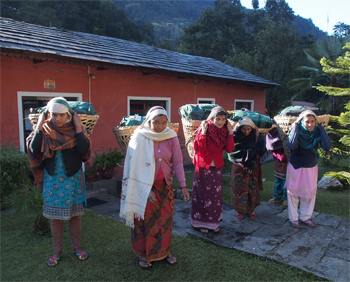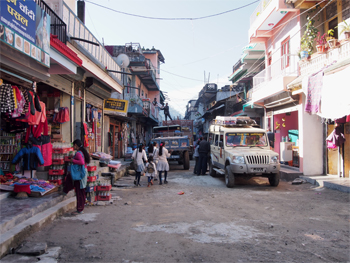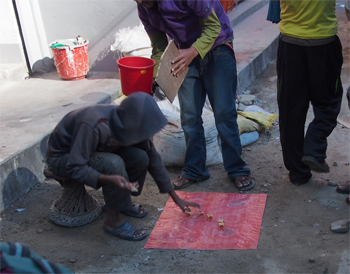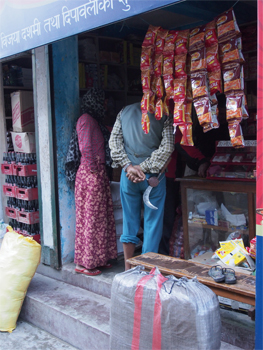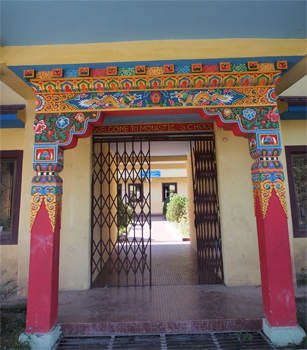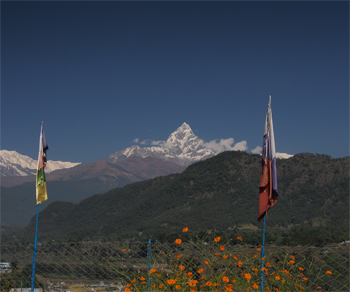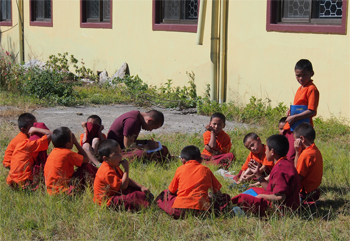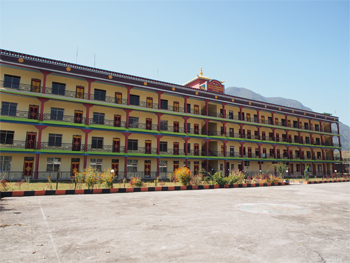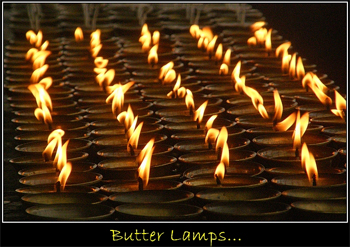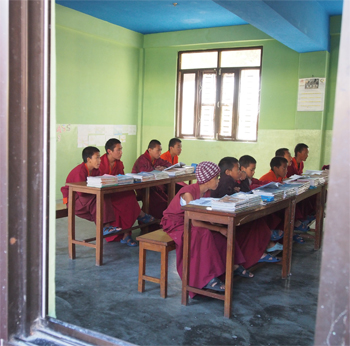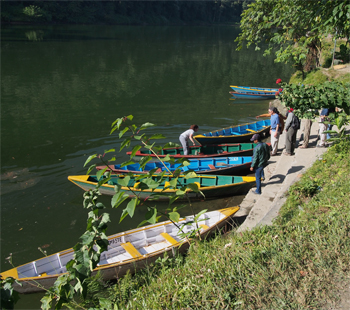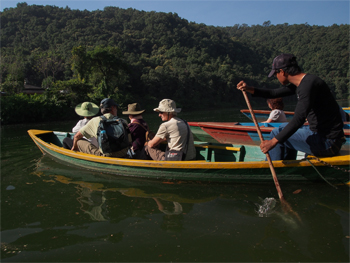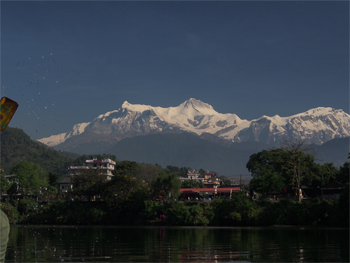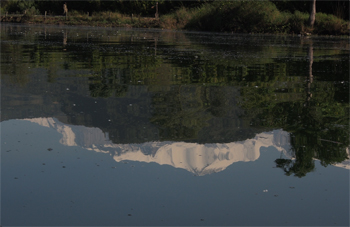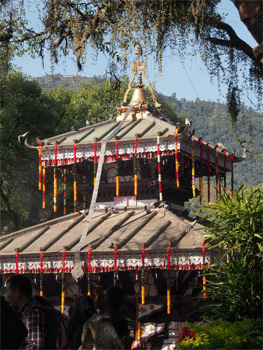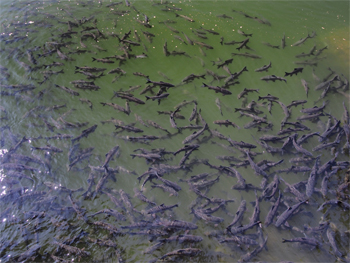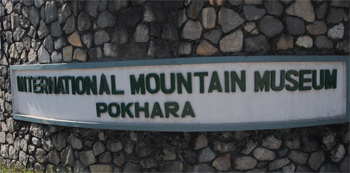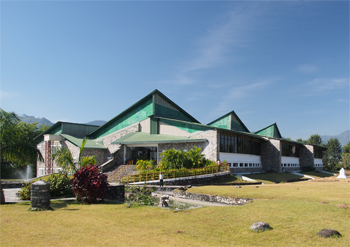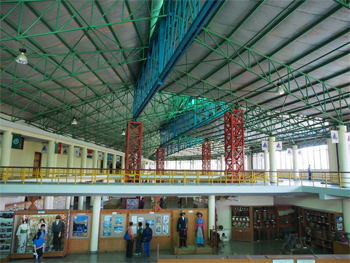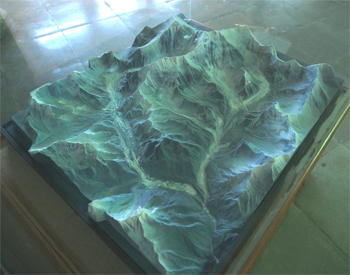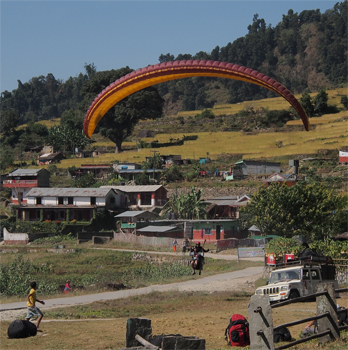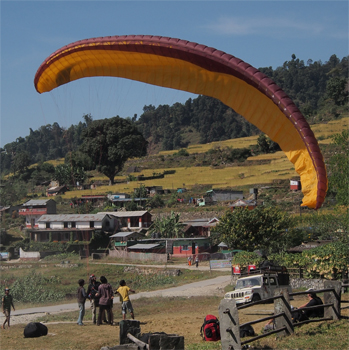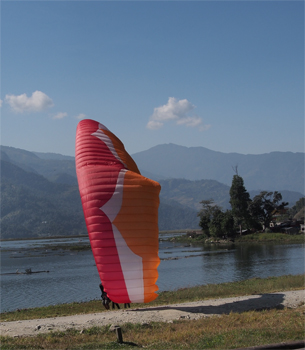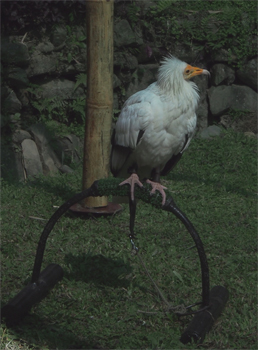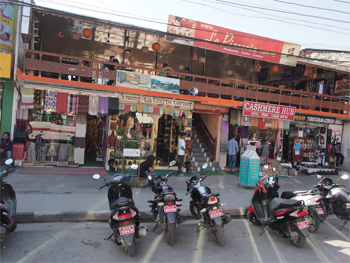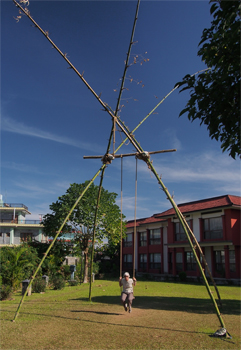Wed., 10/31/12 - Happy Halloween - Birethanti to Pokhara
This morning we walked/trekked 1 1/2 hours back down the rocky road to our bus and headed toward Pokhara.
Lady porters all ready to carry our bags back to the bus in Birethanti
|
Birethanti |
A dice game in Birethanti |
Notice the sickle and sickle holder on the man's belt |
Entrance gate to the Pema Ts'al Sakya Monastic Institute just outside Pokhara |
Pema Ts'al Sakya Monastic Institute
|
View of Fishtail from the Pema Ts'al Sakya Monastic Institute
|
Young monks at the Pema Ts'al Sakya Monastic Institute |
Main temple at the Pema Ts'al Sakya Monastic Institute
|
Guest housing at the Pema Ts'al Sakya Monastic Institute |
Pema Ts'al Sakya Monastic Institute
|
|
Doorway - the Eternal, or Infinite, Knot, the classic icon for reality |
Young monks in the classroom at the Pema Ts'al Sakya Monastic Institute
|
After checking in to our next hotel, the Pokhara Grande, we ate lunch at the hotel buffet, and went to watch a movie Manoj had arranged for us. The movie was "Himalaya" or "Caravan." It had English subtitles and was about a Tibetan village taking salt on the backs of yaks into China to trade for rice. It was interesting because we have learned much about similar traditions and living and belief in gods, etc. This morning we took a wooden rowboat ride on the Fewa (or Phewa) Lake in Pokhara. A young man sat in the back and paddled us to a small island with an 18th c. Hindu Temple dedicated to Bayahi, the goddess protector of Pokhara. There were many worshippers there and an altar of burning incense. A coconut is a favorite offering so there is a coconut slicer near the temple entrance. During festivals goats, ducks, and chickens are sacrificed in the open pavilion beside the temple.
|
|
Boats for our ride on Lake Phewa
|
Boating on Lake Phewa |
Views of the Annapurna Range from Lake Phewa
|
A reflection |
Hindu Temple dedicated to Bayahi, the goddess protector of Pokhara
|
Map of the area |
Fish in the lake |
Guardian of the temple
|
We visited the International Mountain Museum. One section exhibited pictures of mountain peaks that are climbed in other countries: Slovenia, Taiwan, Switzerland, etc. Many of those countries donated money for the creation of the museum. Another section displayed mountaineering equipment used over the years. There are 14 peaks over 8,000 meters (26,240 ft.) in the Himalayan Range, which runs from Pakistan to eastern Bhutan. Seven are in Nepal, including Mt. Everest (Sagarmatha, in Nepalese) and the eighth highest peak, Dhaulagiri in the Annapurna Range. Another exhibit explained the creation of these peaks and the tectonic plate movement.
|
|
International Mountain Museum
|
International Mountain Museum - interior |
International Mountain Museum - model of Mt. Everest area - north side
|
We had lunch at Maya Devi Village and the Himalayan Raptor Rescue organization. After a lunch of pumpkin soup, garlic bread (delicious), chicken sandwich, and brownies, while watching parasailing from the cliff behind us, the owners spoke to us about their rescue operation. They care for injured and orphaned raptors with the intention of releasing them when they are healthy. Their biggest project involves stopping the use of Diclofenac, an anti-inflammatory drug used by farmers on their old, sick cows and oxen. When the animal dies it is left in the field for raptors (vultures) to scavenge. The Diclofenac in the beef kills a vulture in 24 hours. |
Parasailing
|
Coming in for a landing |
Coming in for a landing
|
Safely landed |
Collapsing the sail |
Since the 1990's three species of vultures have decreased in population by 99%. Without the vultures to clean up the carcasses, feral dogs are over populating and many carry rabies. This organization is campaigning and creating Vulture Safe Zones to feed untainted cows to vultures. They also invented Parahawking, where one of their two trained Egyptian vultures is released from the cliff and the tandem parasailors follow. The raptor can see dust and insects in the thermals and get in them to soar effortlessly. The humans follow the bird and give him treats in the air while having a wonderful soaring experience.
|
Egyptian vulture
|
Egyptian vulture |
Pokhara city street |
Gale on the bamboo swing at the hotel
|
Sunset on the Annapurna Range
|
|
| Return to Top | Return to Nepal Itinerary | Return to Dreamcatcher Home Page |
